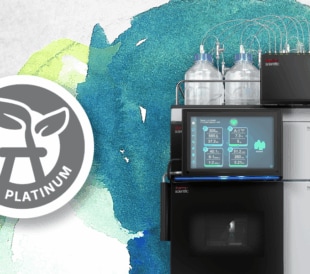 I’m a planner by nature and as a full-time working mum I run a tight ship. You could say I try to implement the principles of Quality by Design1 (QbD) at home. Utilizing multiple lists, schedule planners and detailed weekly menu options (with accompanying recipes and corresponding shopping lists… I wish I was joking), I try to navigate the weekly work/life juggles and daily toddler dramas.The principles underpinning QbD are by no means new and many industries have benefited from the concept to improve their product and process quality. Regulatory agencies such as the U.S Food and Drug Administration (FDA) and the European Medicines Agency (EMA) have adopted the principles to enhance the discovery, development, and manufacture of therapeutic drugs.
I’m a planner by nature and as a full-time working mum I run a tight ship. You could say I try to implement the principles of Quality by Design1 (QbD) at home. Utilizing multiple lists, schedule planners and detailed weekly menu options (with accompanying recipes and corresponding shopping lists… I wish I was joking), I try to navigate the weekly work/life juggles and daily toddler dramas.The principles underpinning QbD are by no means new and many industries have benefited from the concept to improve their product and process quality. Regulatory agencies such as the U.S Food and Drug Administration (FDA) and the European Medicines Agency (EMA) have adopted the principles to enhance the discovery, development, and manufacture of therapeutic drugs.
With regards to pharmaceutical or biopharmaceutical QbD, the approach specifically aims to ensure the quality of therapeutics by employing analytical, statistical and risk management methodologies in their design, development and manufacture and quality control. To ensure both drug efficacy and safety, a key goal of QbD is to ensure that all process-related sources of variability are identified, understood and managed.
QbD guidelines require a comprehensive understanding and thorough characterization of a drug’s critical quality attributes (CQAs) at the molecular level, which relies heavily on analytical technologies such as high performance liquid chromatography and mass spectrometry as well as many other characterization technologies. CQAs are identified and used to inform product quality, safety and efficacy throughout development and manufacturing and ultimately to ensure the desired product quality is met prior to lot-release.
Traditionally, multiple assays are used in combination to identify and monitor CQAs individually, whilst many are profile-based and are often not capable of identifying and quantifying potential amino acid residue-specific CQAs.
The Thermo Scientific™ HR Multi-Attribute Method (MAM) is a powerful high resolution accurate mass (HRAM)-based workflow that has been designed to simplify and standardize biopharmaceutical characterization and quality control. This HRAM-based analytical workflow can replace many of the time-consuming methods typically required for the characterization and QC of therapeutic proteins and enables identification, quantitation, and monitoring of multiple CQAs simultaneously in a verified workflow, serviced and supported by MAM experts from a single laboratory partner.
Other HR MAM benefits include:
-
- Reduction in cost and time, as well as fewer SOPs and instruments to maintain.
-
- A standardized workflow solution for your analytical processes on multiple instruments across different development sites, from research and development to manufacturing and QC.
-
- Global environment – workflow standardization offers peace of mind when preparing regulatory filings.
-
- Full workflow support, globally, from a dedicated team of Thermo Fisher Scientific MAM experts.
Watch this handy animation to learn more.
Now if I could just find a workflow that can speed up and simplify my home QbD efforts and perhaps find something that actually helps with toddler teething…
-
- Juran, J.M. (1992). Juran on Quality by Design: The New Steps for Planning Quality into Goods and Services. Free Press

How to Get More Accurate HPLC Quantitation of Semi-Volatiles
Struggling to accurately measure semi-volatile analytes? Str...
Read More
A Greener HPLC Guide: How ACT Labels Help Promote Lab Sustainability
Labs use up to 10 times more energy than offices. Here’s h...
Read More
Radical-based Ion Activation and Dissociation
Electron Transfer Dissociation (ETD) has been commercialized...
Read More
Benefits of Automating Your Antibody QC Analytical Workflows
Want a less stressed QC lab? Discover how automation c...
Read More